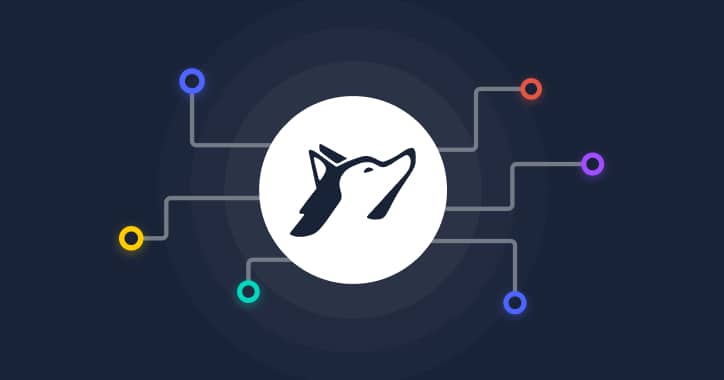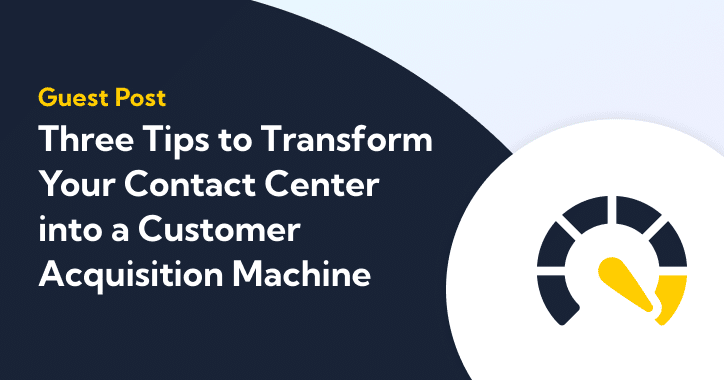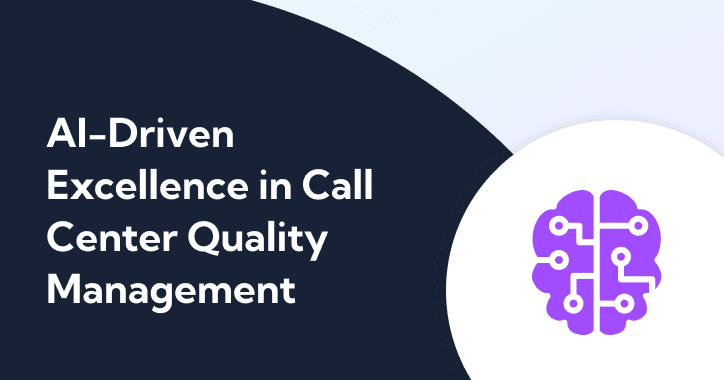Managing your call center’s workforce effectively is essential to keep both customers and agents satisfied. The process can be pretty complex when you take into account your agents’ skills and break times, as well as the different channels you offer support through and peak times.
In this guide, we’ll help you understand what call center workforce management is and why it’s important. We’ll also share some actionable tips that can inspire your workforce management strategy.
What Is Call Center Workforce Management?
In the context of call centers, workforce management is the process of assigning agents appropriately to match demand and maintain operational efficiency.
Workforce management, when done right, helps contact centers anticipate peak times and assign the right number of agents at the right times, boosting customer satisfaction and agent engagement.
Managing the workforce effectively in a contact center requires implementing the following steps:

Forecasting
Forecasting involves calculating the expected number of customer calls or tickets in the upcoming days, weeks, or months. To accurately predict these numbers, you need to follow a data-driven approach by referring to historical numbers, trends, and patterns.
The process can be hard and time-consuming since you need to record every customer interaction with your contact center and collect and archive these touchpoints to use in forecasting. These include voice, email, web, chat, and SMS interactions.
You should also keep in mind that historical data isn’t always enough to predict peak times. For example, if you’re anticipating a future event that will have a direct impact on your contact center demand, you’ll need to account for its effect when calculating the numbers. You should also consider unexpected situations like weather and equipment failure.
Employee Scheduling
After you’re done predicting the future demand levels for your call center, you need to plan your staff according to the shifts or hours that will need the lowest or highest coverage. If you’re running an omnichannel contact center, the scheduling process should also involve allocating more staff to the channels that anticipate a higher demand.
When scheduling is done right, you’ll be able to improve first-call resolution, maximize cost efficiency, and boost overall customer satisfaction and service level scores.
Again, manually matching your agents with call volume projections using spreadsheets and other unspecialized software can be resource intensive.
Assigning Agents
Now that you’ve forecasted demand and scheduled your shifts accordingly, it’s time to assign your agents in a way that maximizes productivity and avoids burnout.
Here, time isn’t the only factor to consider. You should also consider your agents’ soft skills, experience, and expertise. For example, if you know that some of your agents are highly knowledgeable about one of your products or services, assigning them to handle customer queries related to this product might be a good idea.
You might also want to implement shift bidding to alleviate the load off your overworking agents.
Intraday Management
Finally, you need to make sure that your call center’s workforce is optimally assigned based on the defined schedule.
As you work through your schedules, you may notice unexpected shifts or patterns that can make you consider adjusting your forecasts to avoid understaffing or overstaffing and meet your service level goals.
It’s also important that you track adherence for each team or agent. Are your agents doing what they’re supposed to do efficiently? How productive are they? Are they capable of handling customers successfully?
Benefits of Workforce Management in Call Centers
There are many perks of effective workforce management in your call center. With workforce management, you will:
Exceed Your Customers’ Expectations
Without proper workforce management, meeting your customers’ expectations is almost impossible. Here’s the thing: customers in this day and age care more about great customer service experiences than ever. Time is a crucial factor here; a customer just won’t overlook a long waiting time.
Allocating your resources more effectively with workforce management will help you maximize service levels and keep your customers happy with quick resolutions from agents that can understand their problems.
Optimize Agent Scheduling
Contact centers that have implemented hybrid or fully remote work environments may have a harder time adjusting their agent schedules appropriately.
In a call center where all the agents are physically present on the floor, the manager can just take a quick look and modify agent schedules accordingly to prevent overstaffing or understaffing.
Workforce management, accompanied by the right software tools, helps call center managers adjust agent schedules to match their target service levels and Key Performance Indicators (KPIs) regardless of where their agents work.
Make Your Employees Happier
Workforce management can have a positive impact on your agents’ well-being and job satisfaction.
Understaffing due to improper workforce allocation causes your agents to burn out quickly, which can negatively affect their productivity, and even worse, drive them to quit their jobs faster.
With workforce management, you’ll be able to predict demand more accurately and determine how many agents your contact center needs to match the call volume. Not to mention, your agents won’t be asked to work beyond their capacities, helping you retain them for a longer time.
The cost of hiring, onboarding, and training an agent can significantly hurt your call center’s finances if you have a low turnover rate. Not to mention, your call center will develop a bad reputation and drive high-quality agents away from applying for open positions.
Maximize Your ROI
Workforce management can increase your contact center’s revenue by making your agents available at the right time. Optimal resource allocation can also reduce waiting times and customer churn rates so that you never miss a support or sales call.
On top of that, workforce management helps you decide the number of agents you need. Human resources consume about two-thirds of a contact center’s budget, and without workforce management, overstaffing (and overspending) becomes more likely.
Of course, you need to make sure your agents are properly trained and equipped before assuming that it’s a numbers problem.
8 Actionable Tips for Effective Call Center Workforce Management
Workforce management can do more harm than good when implemented incorrectly. To maximize the return on investment of your workforce management efforts, follow these 5 steps:
1. Build a Workforce Management Team
If you’re serious about improving your workforce management, assigning a dedicated team will drive the best results. You can either hire a whole new team or assign some of your existing employees to the job.
Then, you need to invest in training your WFM team and making sure that your goals are clear. It’s also important that you equip them with the right software tools that will help them do their job more accurately and efficiently.
A workforce management solution would be ideal here as it’ll provide your team with access to powerful data visualization tools, demand estimates, historical analytics, and employee performance data.

2. Ensure Compliance With Labor Laws
Your workforce management program must be designed in compliance with labor laws. These laws protect employee rights and interests. The most prominent labor laws include the Fair Labor Standards Act (FLSA), the Family Medical Leave Act (FMLA), and the Affordable Care Act (ACA).
3. Track KPIs
One of the best ways to optimize your workforce management effort is to track and measure your KPIs. Keeping track of the numbers that matter will help you identify opportunities for improvement and make informed decisions that can further enhance your workforce management strategy.
For example, if your agents struggle in a particular area, focusing your training efforts on it will improve your agent performance and help meet your workforce management targets.

4. Create a Knowledge Base For Your Employees
Building a self-service knowledge base for your agents can help them do better at their jobs without having to ask for help. Ideally, your knowledge base should include helpful how-to guides, answers to the most frequently asked questions, real-life scenarios and the ideal ways to handle them, and tutorials on using different software tools.
5. Foster a Culture of Continuous Learning
Call center agents love to feel involved and appreciated. By allowing them to take on more responsibilities and expand their skills, you’ll motivate them to perform better at their jobs.
For example, if you train your inbound call agent on how to respond to customer queries on other channels like email or chat, they’ll feel more confident in their capabilities. Not only will you reduce your agent turnover rate but also make your customers more satisfied.
6. Utilize Multi-Skill and Flexible Scheduling
Agent scheduling isn’t meant to be random — with almost all modern contact centers adopting an omnichannel environment, it’s become vital to schedule agents from a skill-based point of view.
For example, agents who are proficient at handling phone calls should be prioritized for phone support assignments. You should also consider the expected demand for each channel based on accurate data-based forecasts — channels that expect the highest levels of demand should have more agents readily available to support customers.
Adopting skill-based agent scheduling also means that you’ll need to fine-tune your coaching and training strategies. For instance, you might need to train more agents on how to provide email support to fill in the gaps when the demand for email support increases.
It’s also important to provide some sort of flexibility for your agents by giving them more control over the time and length of their shifts, as well as which channels they prefer to work on and from where they like to work (office or remotely). Flexible scheduling can significantly boost agent satisfaction and minimize turnover rates, as well as streamline workforce management and reduce staffing costs.
7. Elevate Agent Adherence to Enhance Customer Service
Agent adherence stands as a crucial component in your Workforce Management (WFM) cycle. It’s more than just a measure of efficiency and productivity; it’s the cornerstone of intelligent intraday management, accurate long-term forecasting, and effective scheduling and performance management.
Providing exceptional customer service isn’t all about having skilled agents — yes, it’s important, but it’s equally important to ensure that these great agents are available to your customers when they need them.
To bolster adherence in your contact center, consider these strategies:
- Embrace Tailored Adherence Goals: Recognizing the diverse nature of a multi-skill, multi-channel contact center, where interaction durations vary, adopting a uniform adherence goal is never a solution. Instead, you should aim for dynamic, individualized goals that reflect the unique aspects of each role and channel.
- Spread the Responsibility for Adherence: While measuring your agents’ adherence is vital, it shouldn’t be their responsibility alone. Managers must also collaborate closely with the WFM team to ensure the accuracy of schedules, fostering shared accountability for maintaining adherence across all levels.
- Prioritize Daily Adherence Measurement: Waiting a week or a month to measure adherence in a fast-paced contact center environment just doesn’t cut it. Instead, you should opt for daily tracking allows for more accurate benchmarking, enabling finer-tuned intraday management that aligns more closely with actual demands.
Focusing on these areas will help you enhance the effectiveness of your agents and, consequently, the quality of your customer service.
8. Revolutionize Work Schedules With Shift Bidding and Agent Empowerment
Shift bidding, when done right, can be a game-changer for optimizing your contact center operations. It factors in an agent’s performance, call-handling skills, experience, and other metrics to balance staffing efficiently while reducing burnout among agents.
To make less appealing shifts more attractive to your agents, you need to use incentives — This approach not only fills these shifts but also acknowledges the agents’ willingness to work during these periods, resulting in higher agent satisfaction rates and better customer service.
Empowering agents with more control over their schedules marks a significant shift in workplace dynamics. It enables them to adjust their work schedules, improving their work-life balance and helping them maintain much-needed workplace flexibility. With advanced rule-setting and pre-approval features in WFM solutions, you can further streamline the process, allowing for easy integration of agent-requested changes or preferences.
Why Use a Workforce Management Call Center Solution
Now that you’re more familiar with the importance of workforce management, you can’t underestimate the value that a workforce management call center solution brings to the table. Here’s what you can expect from a WFM system:
Improved Forecasting and Scheduling Accuracy With Automation

Some call centers rely on manual data entry and calculations using spreadsheets or other generic tools, which can take a huge amount of time and effort. This approach may also affect the accuracy of your forecasts. Plus, using spreadsheets means you’ll find yourself relying on guesswork more heavily, especially when it comes to the timeframes of your meetings and training sessions.
Workforce management software improves agent scheduling and forecasting accuracy, enabling you to get accurate numbers that will help you prevent overstaffing or understaffing. They’re equipped with powerful automation features that help you save time and effort by eliminating redundant manual tasks.
They also make it easier for you to improve the accuracy of your forecasts. WFM automation features throughout the workforce management cycle often include:
- Time tracking
- Scheduling management
- Resource allocation
- Performance tracking
- Attendance tracking
WFM tools can even predict call volumes and the number of agents required to handle them. And while you shouldn’t fully rely on these forecasts, they serve as a good starting point for you to build on and make accurate predictions.
Enhanced Communication
Workforce management tools help keep everyone in your contact center in the loop, including stakeholders and other third parties.
WFM solutions integrate agent portals that facilitate communication between contact center agents and their managers with alerts and notifications about benchmarks, shifts, and policy adjustments.
Moreover, effective communication results in a more productive workforce that’s focused to achieve your organizational goals and objectives.
Reporting and Analytics
WFM software tools generate comprehensive reports and analytics that provide access to key insights about your contact center, including high call volume times, employee absenteeism, performance metrics and KPIs, and customer churn rates.
This will help you forecast customer demand more accurately by analyzing patterns from your historical data reports.

How to Choose the Right Workforce Management Solution for Your Contact Center
There are many contact center-focused WFM solutions, but not all of them are going to be suitable for your contact center.
First, you need to define your requirements and identify the features that can fulfill these requirements. You should also assess how such a solution would fit into your current system. Some solutions may integrate seamlessly into your strategy they enable you to allocate your human resources more flexibly to accommodate demand on different support channels.
Further, integrating a new solution into your system can facilitate access to data and eliminate manual work, contributing to more accurate performance reports and forecasts. You should consider the solution’s built-in reporting capabilities — advanced WFM software can provide detailed reports and insights into your workforce utilization and agent productivity metrics.
Once you’ve developed a clearer idea of what you need in a WFM solution, you need to set your budget allocations. Different WFM software solutions offer different pricing packages, but you also need to consider things like updates and any other additional costs.
However, make sure that you don’t get carried away with the software’s cost. Remember, the whole point of optimizing your workforce management is to maximize efficiency and reduce costs, so if a WFM solution will significantly free up your resources and make your employees make the most out of their work days, the monthly subscription costs become less relevant.
How Balto Can Optimize Contact Center Workforce Management
Successful workforce management starts with empowering your agents and making sure they’re confident that they can excel at their jobs.
Balto provides your agents with real-time guidance and assistance during inbound calls with Artificial Intelligence (AI), helping them respond accurately to your customers’ queries.
Gain access to analytics and insights about your customers to support your workforce management efforts with accurate forecasts. Identify the problems that cause low scores and use real-time QA to minimize human error. Utilize skills-based routing and analyze call patterns to boost customer satisfaction.
Get a free demo to see Balto in action and learn how it can help you manage your workforce more effectively.






